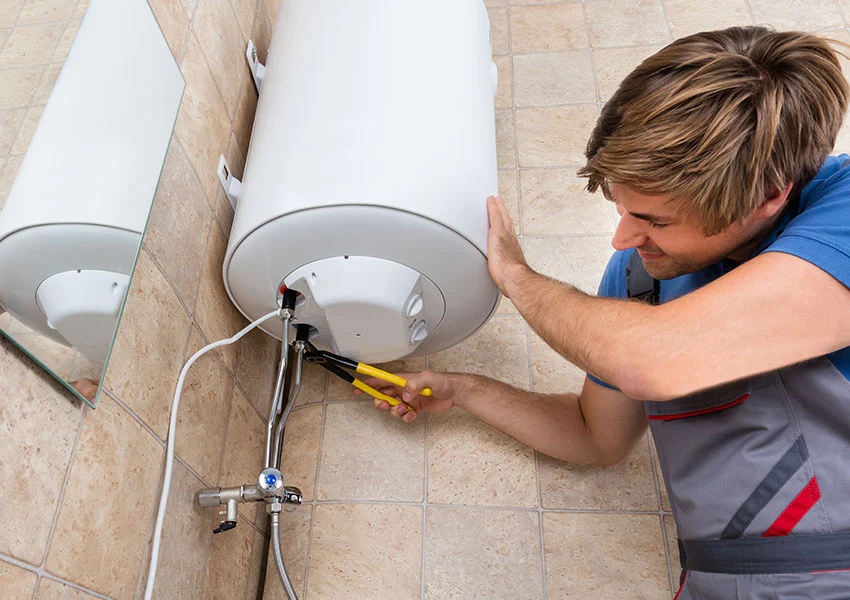On this page down the page you'll find additional reliable ideas about How to Maintain a Hot Water Heater in a Few Simple Steps.

Warm water is necessary for daily convenience, whether it's for a rejuvenating shower or cleaning meals. To guarantee your hot water system runs efficiently and lasts much longer, regular upkeep is essential. This write-up supplies functional suggestions and understandings on exactly how to maintain your home's warm water system to prevent disruptions and pricey repair services.
Introduction
Keeping your home's hot water system might appear difficult, yet with a few simple actions, you can ensure it operates efficiently for years ahead. This guide covers everything from recognizing your hot water system to do it yourself maintenance pointers and recognizing when to employ professional assistance.
Relevance of Preserving Your Warm Water System
Regular maintenance not just extends the life expectancy of your warm water system yet also ensures it operates effectively. Disregarding maintenance can cause lowered efficiency, higher power bills, and even early failing of the system.
Signs Your Hot Water System Demands Maintenance
Understanding when your hot water system requires focus can prevent major concerns. Watch out for indicators such as inconsistent water temperature, odd sounds from the heating system, or rusty water.
Flushing the Hot Water Heater
Purging your hot water heater removes sediment accumulation, boosting performance and prolonging its life.
Checking and Replacing Anode Rods
Anode poles protect against corrosion inside the tank. Examining and replacing them when worn is vital.
Facility Concerns Requiring Professional Help
Examples include major leakages, electric troubles, or if your hot water heater is continually underperforming.
Routine Professional Maintenance Benefits
Professional maintenance can include comprehensive assessments, tune-ups, and ensuring conformity with safety standards.
Inspecting and Adjusting Temperature Settings
Adjusting the temperature settings makes certain optimal performance and safety.
DIY Tips for Upkeep
You can do numerous upkeep tasks yourself to keep your hot water system in top problem.
Looking for Leakages
Consistently inspect pipes and connections for leaks, as these can result in water damage and higher bills.
Understanding Your Hot Water System
Before diving into maintenance tasks, it's valuable to understand the standard parts of your warm water system. Usually, this includes the water heater itself, pipelines, anode poles, and temperature level controls.
Regular Monthly Maintenance Tasks
Regular month-to-month checks can assist catch small concerns prior to they intensify.
Testing Stress Alleviation Valves
Evaluating the pressure safety valve guarantees it works correctly and protects against too much pressure buildup.
Shielding Pipes
Insulating hot water pipelines lowers warmth loss and can conserve energy.
When to Call a Professional
While DIY upkeep is helpful, some problems call for expert proficiency.
Verdict
Routine maintenance of your home's warm water system is vital for efficiency, long life, and expense savings. By complying with these tips and knowing when to look for expert help, you can make sure a dependable supply of warm water without unforeseen disruptions.
How to Maintain an Instant Hot Water Heater
Before tinkering with your hot water heater, make sure that it’s not powered on. You also have to turn off the main circuit breaker and shut off the main gas line to prevent accidents. Also turn off the water valves connected to your unit to prevent water from flowing into and out of the appliance. 2. When you’re done, you have to detach the purge valves’ caps. These look like the letter “T” and are situated on either side of the water valves. Doing so will release any pressure that has accumulated inside the valves while at the same time avoid hot water from shooting out and burning your skin. 3. When the purge valves’ caps are removed, you have to connect your hosing lines to the valves. Your unit should have come with three hoses but if it didn’t, you can purchase these things from any hardware or home repair shops. You can also get them from retail stores that sell water heating systems. Read the user’s manual and follow it to complete this task properly. When the hosing lines are connected, open the purge port’s valves. 4. You should never use harsh chemical cleaners or solutions when cleaning your unit. Make use of white vinegar instead. It should be undiluted and you’ll probably use about 2 gallons. 5. Now flush your water heater. This task should probably take about 40 minutes. We can’t give you specific directions for this because the procedure is carried out depending on the type, model and brand of your heater. With that being said, refer to the user’s manual. 6. When you’re done draining the unit, you have to turn off the purge port valves again. Remove the hosing lines that you earlier installed on each of the water valves. Put the valve caps (purge port) back in their respective places and be very careful so as not to damage the rubber discs that are found inside these caps. 7. Now that everything’s back in place, check your user’s manual again to find out how to reactivate your water heating system. 8. Once it is working, turn one of your hot water faucets on just to let air pass through the heater’s water supply pipes. Leave the tap on until water flows smoothly out of it. https://www.orrplumbing.com/blog/2014/september/how-to-maintain-an-instant-hot-water-heater/
I discovered that write up about Tips on Maintaining a Water Heater when scouting around the internet. Liked our piece? Please share it. Help other people locate it. Many thanks for taking the time to read it.
Click Here